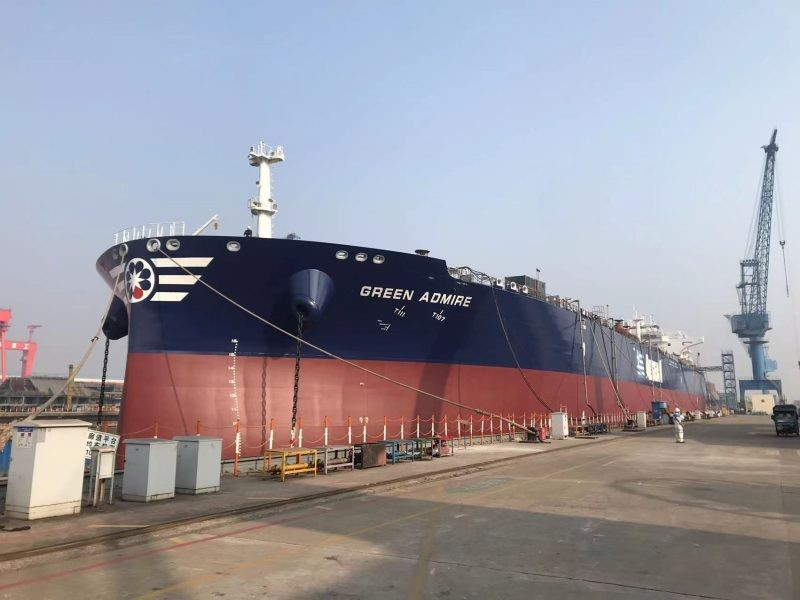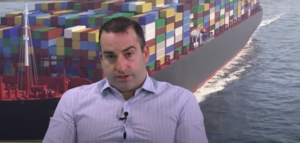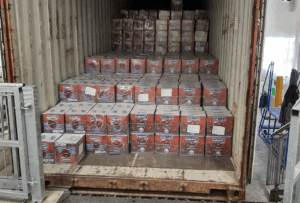Russia on Sunday detained a Greek oil tanker after it left an Estonian port while sailing on a previously agreed route through Russian territorial waters, the Estonian Foreign Ministry said, adding that it had informed its allies about the incident. Few days ago, both NATO and Russia scrambled warplanes in a dramatic ‘dogfight’ above the Baltic after a major standoff over a crude oil tanker.
The oil tanker belongs to a Greek company and was following a previously agreed route through Russian territorial waters, with its final destination being Rotterdam.
A statement from the Ministry of Foreign Affairs said the tanker was detained as it was departing from the Estonian Port of Sillamäe.
“Today, May 18th, the Russian Federation detained the oil tanker Green Admire, sailing under the Liberian flag and owned by a Greek company, as it was departing from the Estonian Port of Sillamäe and following a previously agreed route through Russian territorial waters,” reads the statement.
The Estonian Ministry stated in a press release that they will redirect traffic to and from Sillamäe exclusively through the country’s territorial waters to prevent similar incidents in the future.
“Today’s incident shows that Russia continues to behave unpredictably,” said Foreign Minister Margus Tsahkna. I have also informed our Allies of the event.”
It is noted that this navigational route selected for its maritime safety and not aligned strictly along national boundaries has been established through mutual agreement between Russia, Estonia, and Finland.
In a short statement on the social media X on Sunday, Tsahkna added: “Today Russia detained a Greek tanker Green Admire as it was using a sea route agreed by Estonia, Finland & Russia. Russia continues to behave in an unpredictable manner. Our Allies have been informed.”
The incident took place after Estonia on May 13 tried to stop an unflagged crude oil tanker that was said to be part of a Russian “shadow fleet” of vessels sailing through its exclusive economic zone.
The Estonia Minister of Defence Hanno Pevkur pointed out that over 60% of the Russian oil transport goes through the Baltic Sea. “Russia has 500 shadow fleet vessels in play. If we control the shadow fleet, we have a huge impact,” he said.
The tanker reportedly was sanctioned by the United Kingdom. A Russian Su-35 fighter jet entered the Estonian airspace near Juminda on May 13, Estonian defence forces have confirmed.
The jet had no flight plan, its transponder was off, and it ignored radio contact attempts.
F 16s from NATO Baltic Air Policing launched from Ämari to identify the jet. Tsahkna said the navy stopped the ship, because it was flying no flag and apparently had no insurance. The Russian fighter jet appeared on the scene while the ship was stopped.
“Russia responded dangerously aggressively by accompanying the shadow fleet tanker with a fighter jet, which violated Estonian airspace in the process. This case is yet another example proving that Russia poses a serious threat not only with its military action in Ukraine, but much more broadly,” Tsahkna said.
The Baltic Sea NATO allies and the European Union have agreed on a memorandum of understanding to protect critical undersea infrastructure.
The memorandum of understanding (MoU) will promote practical cooperation between the Baltic Sea countries in this respect. The start of negotiations on the MoU was announced at the Baltic Sea NATO Allies Summit in Helsinki on January 14.
The MoU was signed at the ministerial meeting of the Council of the Baltic Sea States (CBSS) in Vihula, Estonia, on May 16.
On behalf of Finland, the document was signed by Minister for Foreign Affairs Elina Valtonen. “The Memorandum of Understanding highlights the significance of political cooperation between the Baltic Sea countries in a time when Russia’s war of aggression against Ukraine has increased the threat level in the Baltic Sea. It is important to protect critical underwater infrastructure against both unintentional and intentional actions,” Foreign Minister Valtonen noted.
Over 60% of Russian oil transport goes through the Baltic Sea. Russia has 500 shadow fleet vessels in play. If we control the shadow fleet, we have a huge impact. #LennartMeriConference @ICDS_Tallinn pic.twitter.com/zB9WhxeyET
— Hanno Pevkur (@HPevkur) May 17, 2025
Today Russia detained a Greek tanker Green Admire as it was using a sea route agreed by Estonia, Finland & Russia.
— Margus Tsahkna (@Tsahkna) May 18, 2025
Russia continues to behave in an unpredictable manner.
Our Allies have been informed.



